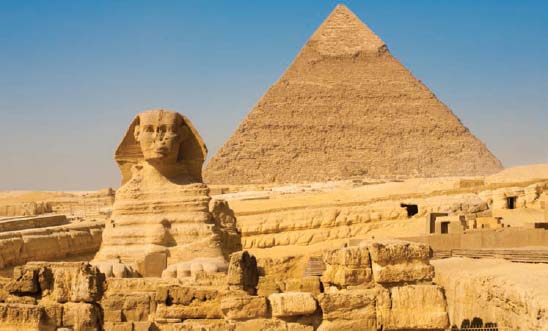Art of the Ancient World, C. 5000 B.c.e.–400 C.E.Ancient Egyptian Art |
Why is Egyptian portrait sculpture so stiff? |
Egyptian portrait sculpture, especially sculptures of the pharaohs, were designed to last for eternity and were made according to strict guidelines. Pharaohs needed to be clearly identifiable by their elaborate headdresses and false beards. Pharaonic sculptures show the ruler either standing erect, or sitting enthroned with hands resting on the knees, one first clenched and one lying flat. These dignified sculptures command respect, and are also very durable.
Carved from the same piece of gray sandstone, the double-portrait of Menkaure and a Queen, from Giza, depicts the pharaoh with his wife. Each figure stands with a rigid, upright posture. Menkaure’s body is youthful and strong; his hands are at his sides, fists clenched, and his left leg takes a stern step forward. The queen’s arms, however, wrap delicately around the pharaoh’s waist, joining the couple in a supportive embrace. This piece follows strict Egyptian conventions of portraiture, clearly indicating the ruler’s power and the queen’s status at his side.

The Sphinx, a monumental human-headed lion, guards the entrance to the pyramid complex at Giza. The Sphinx is approximately 240 feet tall and likely represents the Egyptian pharaoh Khafre.
